|
Flat wick / flat flame
burners. |
 |
 |
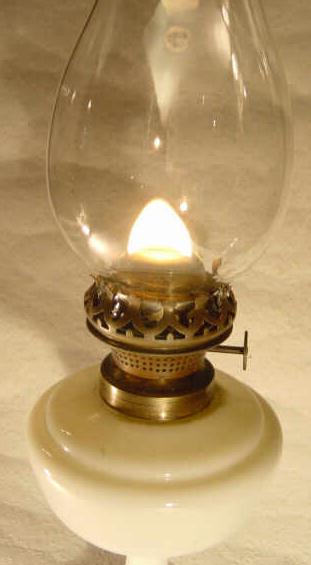 |
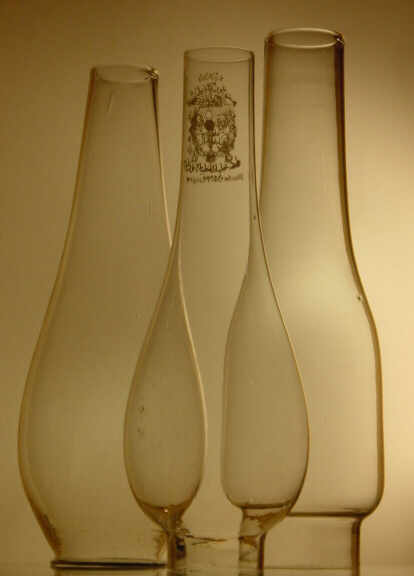 |
|
After a short-time pioneer-period with center-draft lamps for kerosene
lighting, the new fuel used flat wick flat flame
burners. The appropriate chimney is bulged, so-called Vienna-type. On the
left: two American examples, then a Belgian burner by Lempereur & Bernard.
|
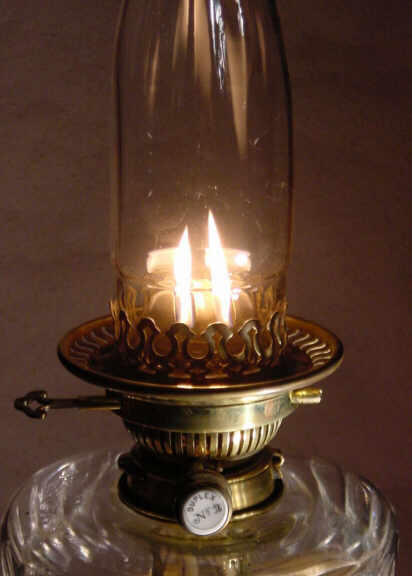 |
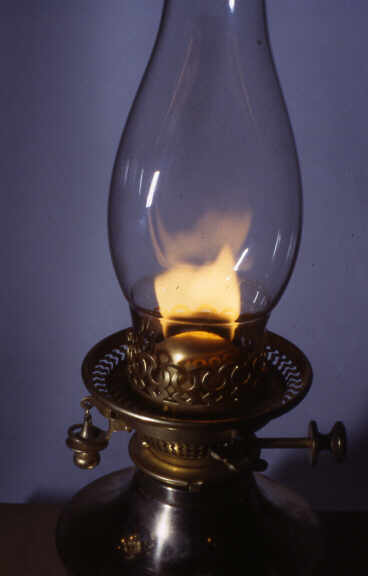 |
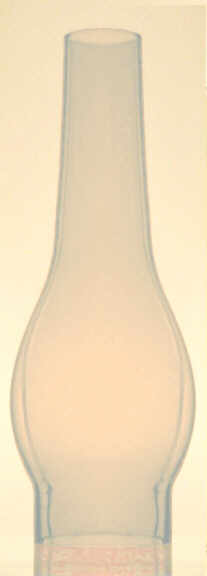 |
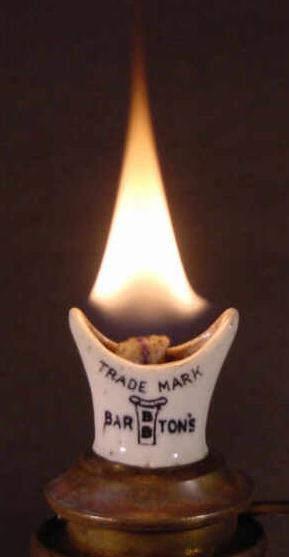 |
|
James Hinks of Birmingham (GB)
introduced in 1865 the Duplex-burner with two flat wicks parallel to each
other. Some improvements were soon added: a gallery-lifter for easy
lighting, and snuffers as extinguishers; also automatic extinguisher
versions for accidental tilting. The most appropriate Duplex-chimney is an
oval flattened bulge chimney. |
For the use in lanterns, many
chimneyless burners were developed, like this Barton-burner. |
|
Folded flat wick burners. |
 |
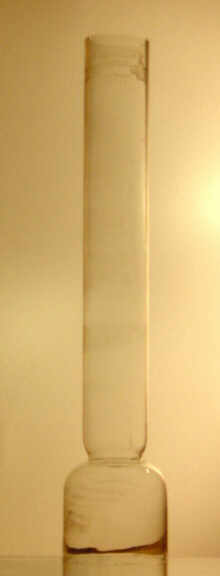 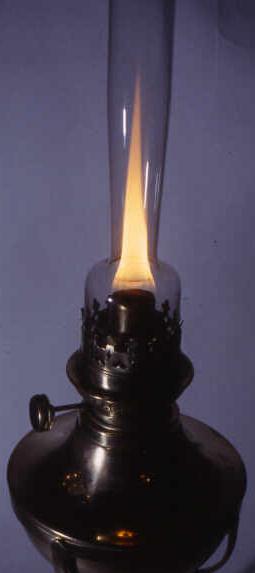 |
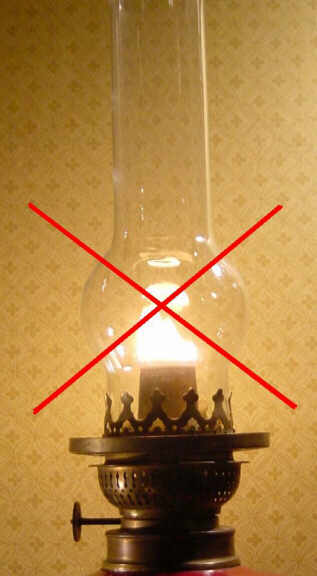 |
One can often see inappropriate chimneys on Kosmos-burners, like this
Matador-chimney. The global design of a burner includes a specific
chimney-profile in order to guide the air flow to the flame and obtain
optimal light output, avoid odor and soot. |
|
Wild & Wessel of Berlin introduced
in 1865 the idea of a flat wick folded to a round flame, later called the
Kosmos-burner. The appropriate chimney is a constricted one, and
stretches the flame upwards. A tapered version of the chimney is called
"Reform" or "improved Kosmos". |
|
Round flame burners with
a flame-spreader. |
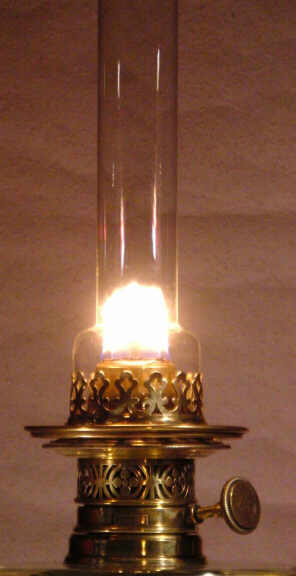 |
 |
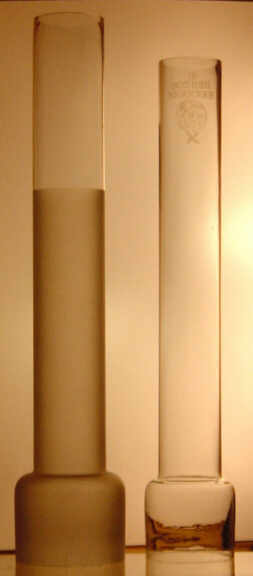 |
 |
|
Round-flame burners were also made
in different versions with a small disk located above the wick. This disk
can be borne by a rod or a meshed tube. According to the size of the disk,
the chimney can be shouldered, straight or bulged. The Sonnenbrenner by
Ditmar in Vienna uses a tubular wick fed by a permanent transport wick.
The half frosted chimney is very rare, as frosted chimneys were almost
never made for kerosene-lighting. |
This Sebastianbrenner by
Schwintzer & Gräff in Berlin includes a middle-sized flame-spreader borne
by a meshed tube, also called a "thimble". The chimney is straight
(gas-chimney). |
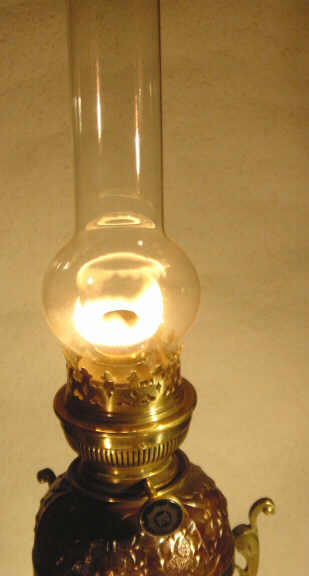 |
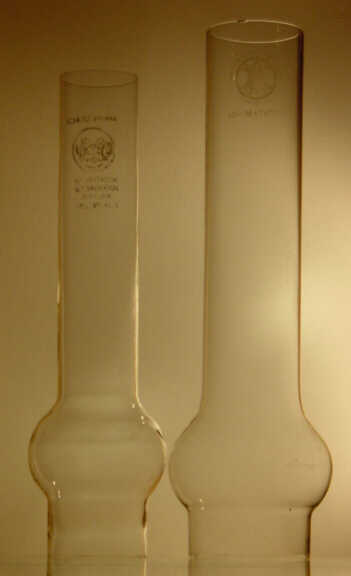 |
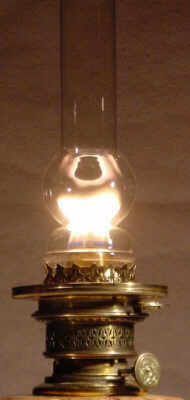 |
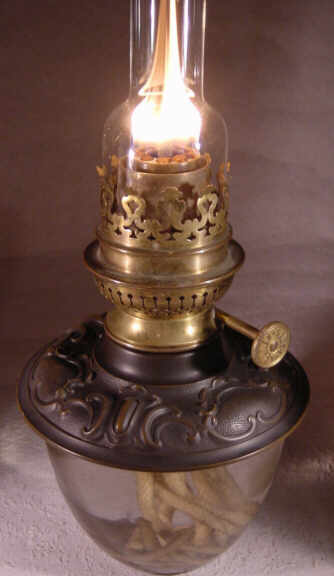 |
|
The Matador-burner is the most
popular burner with flame-spreader in continental Europe. It was developed
by Ehrich & Graetz of Berlin toward 1895. The meshed tube regulates the
central air draft. Caution:: Modern burners are made and
offered under the name "Matador", but don't have the authentic design of
the original matador-burner, not the same wick size or texture.
|
The Central-Vulkan or Globe-Vulcan
burner made by Wild & Wessel of Berlin is equipped with a large
flame-spreader sitting high on a rod. The chimney has both a constriction
for a thorough air/fuel mixture, and a bulge to spread comfortably
the flame. |
The Mitrailleuse-burner bye
Schwintzer & Gräff of Berlin uses several rope-wicks (generally 12) to
form a tubular flame. |
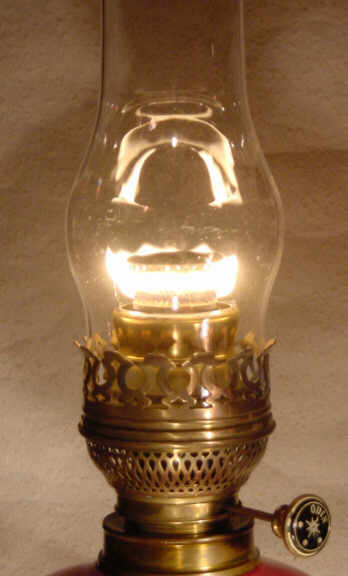 . . |
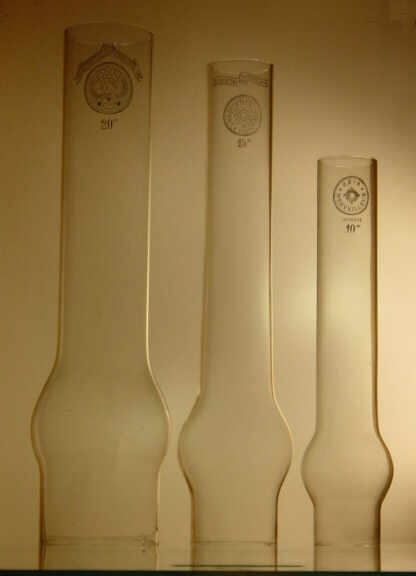 |
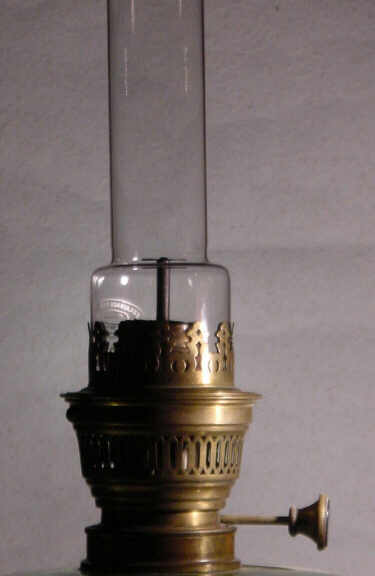 |
  |
|
Carl Holy of Berlin developed many
different burners. The flame spreader is borne by a rod in some models, by
a meshed tube in others. The chimney shape is differs according to the
burner type and disk size. Some burners made by Holy were sold in Great
Britain under the name Wizard. |
|
Burners for miniature
lamps. |
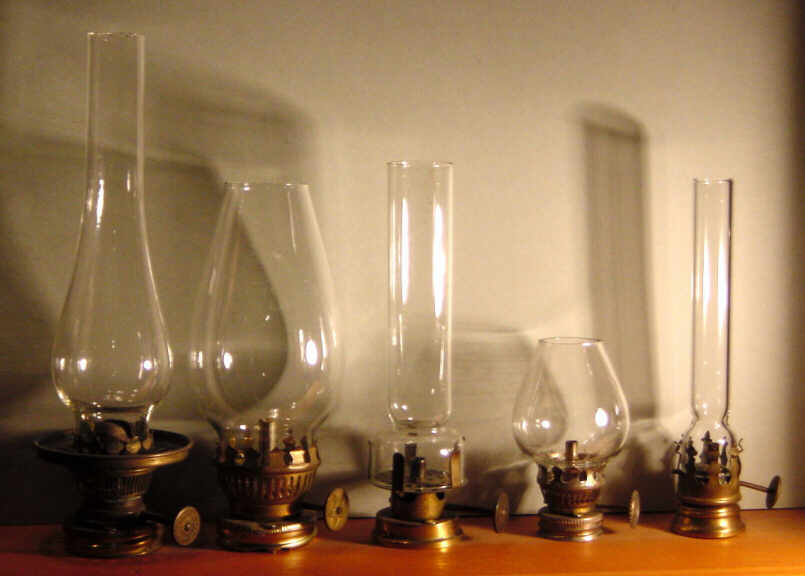 |
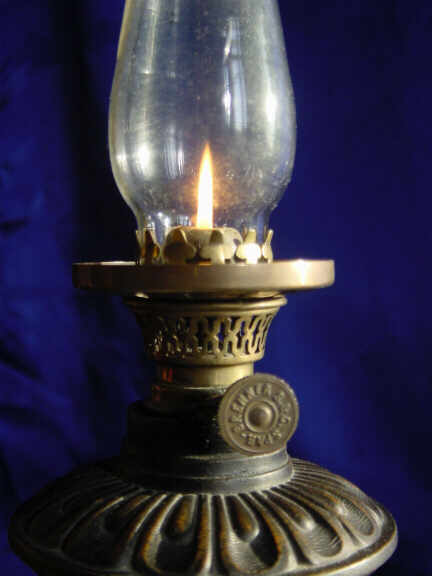 |
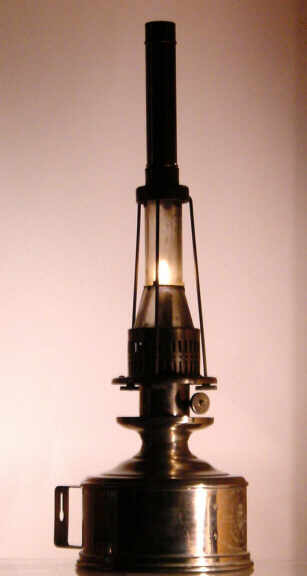 |
|
Here are shown several burners in
use in miniature lamps or night-lights. From left to right: Sparbrenner,
Perkeo, Starburner (Sternbrenner), a small Perkeo and a burner for
dollhouses. |
Flame of a "Sparbrenner". |
This small version of the
Astra-Soleil lamp looks like a gasoline-lamp, but was made for kerosene.
The chimney is composite, partly metal to prevent breakage. |
|
Center-draft burners
and a fan lamp. |
 |
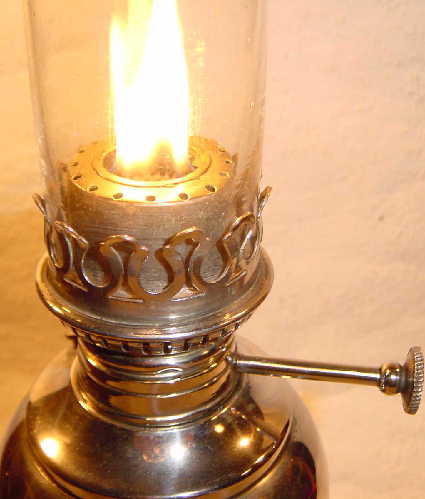 |
 |
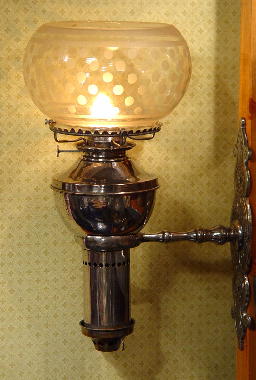 |
|
Center-draft lamp with a complicated
flame- spreader by Louis Sepulchre in Herstal near Liege (Belgium).
|
Lamp by Caby in Herstal near
Liege (Belgium). |
"Sonnenlampe"
by Kaestner & Toebelmann, Erfurt (Germany). |
Not exactly
"center"-draft, the chimneyless Hitchcock-lamp has a fan to force air up
to the burner. |
|
Important notice about
kerosene-burners and lamps |
|
The main difference
between center-draft lamps and side-draft burners is the fact that
CD-lamps only accept their own burner which perfectly fits around the
central air tube, where side-draft burners (i.e. Kosmos, Matador,
Odin, flat-flame etc. etc.) have a widely standardized fount-thread and
can be used on any fount having a suitable collar. This feature was one of
the main improvements of the kerosene-era.
Therefore, it is not correct to speak
about "Kosmos-lamps", because any lamp can use any side-draft burner with
a suitable thread!
Here again, when identifying a lamp's
origin, the general rule is to identify the burner's manufacturer and the
lamp's maker separately, as they could be totally different, often even
from different countries. French lamps equipped with German or Austrian
burners are a common example. |
|
Wick-fed incandescent
burners. |
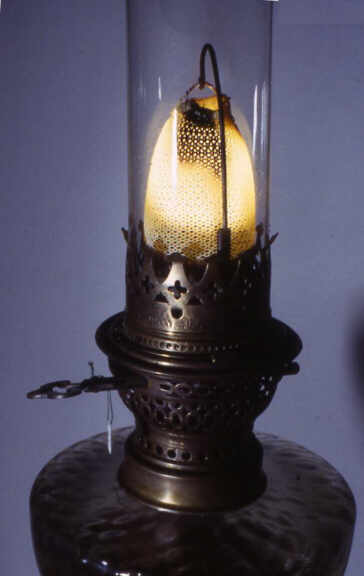 |
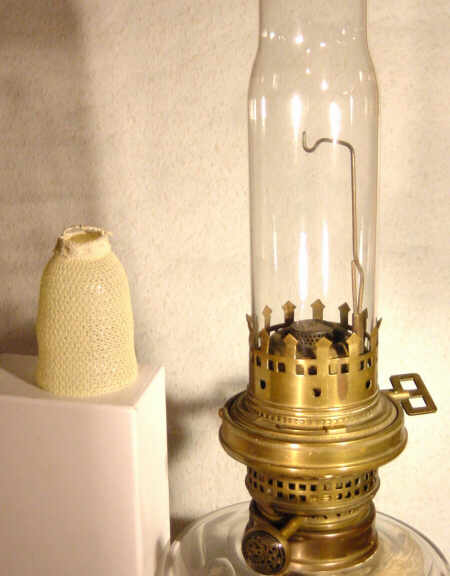 |
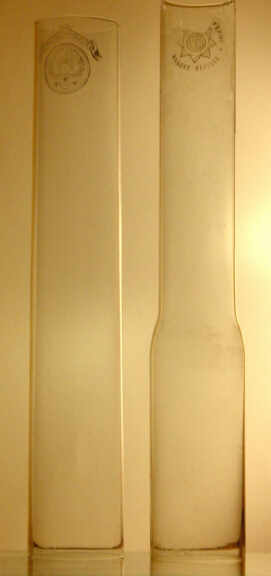 |
 |
|
Once the gas mantle was invented for
gas lighting, burners for other fuels were developed on the same
principle. Kerosene lamps were made with better air inlets and higher
chimneys to obtain a blue flame and make the mantle glow. Appropriate
chimneys are straight or slightly shouldered. We show here two versions of
the Kronos-burner by Hugo Schneider of Leipzig (Germany). |
The Aladdin-lamp was developed in
the USA from 1909 on, and can still be found in Europe. |
|
Kerosene-vapor burners. |
|
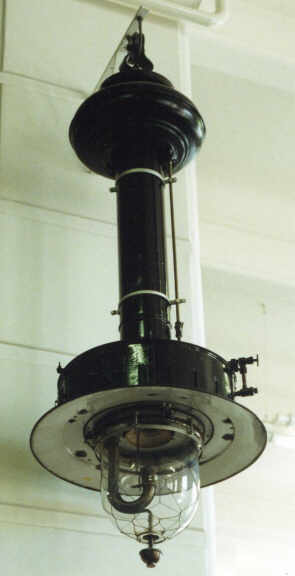 |
 |
Far left: Standard-Light, a rare
gravity-fed kerosene vapor-lamp with an upright Welsbach burner.
Left: a pressure kerosene pendant by
Martin Brandt & C°, Berlin.
Pressure lanterns for kerosene were very popular
throughout the world. Ehrich & Graetz developed the Petromax still
available today. We show here a Geniol, one of many similar models.
|
 |
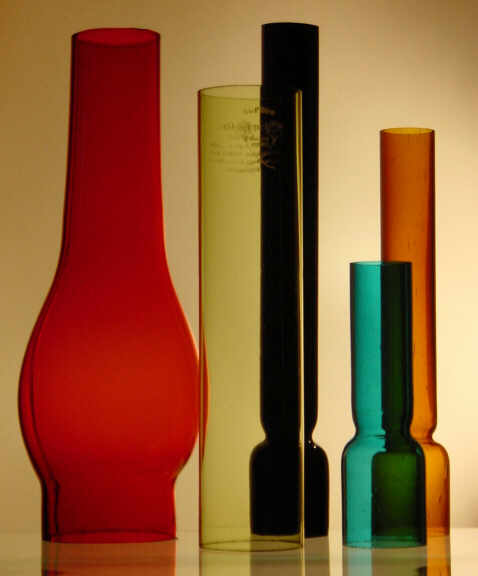
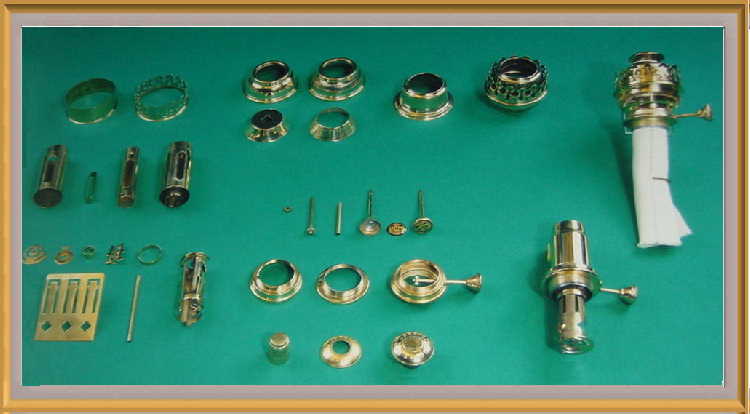




















 .
.
















